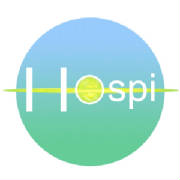|
The H Trust |
|
 GreenSHIFT: Designing Renewable Organizations GreenSHIFT: Designing Renewable OrganizationsThis article is the property
of David Secan and may only be used with permission © 2007, all rights reserved In a previous article,
I considered GreenSHIFTing toward renewable lifestyles in terms of understanding who
we are and expressing ourselves healthfully in terms of how we live on a daily basis. The focus of the present article is
GreenSHIFTing through the next “ripple of influence” – renewable
organizations. As with individuals, organizations express who they are as a function of how they present and conduct themselves
on a daily basis. And similarly, organizations may express and manifest healthfully or not so healthfully. Renewable organizations
are inherently healthful. This article addresses the question, What is
a renewable organization? Healthful and renewable organizations position themselves to do several things well by design: a) Integrate Purpose, People, and Place, b) Direct and Sustain Mission Integrity, c) Increase Personnel Effectiveness, and d) Improve Building Performance. Let’s explore briefly each of these objectives. Integrating Purpose, People, and Place. Purpose, people, and place are intrinsically connected. Meaningful purpose provides benefit by identifying a unifying theme and developing guiding principles around which talented people cooperate to achieve success. A renewable organization recruits, rewards, retains, and restores suitable people as it develops succession paths for growth. When healthful business practices encourage continuous improvement in satisfaction and performance, both its mission and business measures will reflect intended outcomes. An organization manifests place through the environment it creates. Environment is the integrated expression of organizational culture, indoor and outdoor environments, relationships with stakeholders, communication forms and styles, and even its virtual presence via the web. A healthful organization simultaneously embraces and reinforces this sense of place, and perhaps belonging, which becomes not only sustaining, but renewing as well. Directing and Sustaining Mission Integrity. Purposefulness becomes continually renewable when an organization’s mission and business models are aligned and integrated. Imagine a mission that includes equitable benefit and respect among stakeholders, for example. The business practices must demonstrate equitable benefit and respect in order to affirm integrity. In so doing, directing integrity means (1) maintaining a unifying strength, or “structural integrity,” where mission and business structures are mutually supportive, and (2) sustaining an honorable presence, where mutual benefits among all stakeholders are paramount. It is also essential to understand that the business metrics connect with the mission intent. In other words, the organization measures what it treasures. Increasing Personnel Effectiveness. Fulfilling one’s own capacity to serve may be the highest personal calling. Perhaps the highest organizational calling is to create a healthful environment in which personnel can flourish within the context of a shared mission with strategic performance outcomes. In renewable organizations, leaders are responsible for creating a culture that employs, enables, revitalizes, and rewards people who seek to better themselves, the organization, and all of the stakeholders. Always relevant, the physical environment serves best when it becomes a natural extension of effective individual and cooperative thinking and working styles, rather than a physical barrier or cultural constraint that shapes behavior in a way that reduces effectiveness in terms of performance, morale, etc. Improving Building Performance. Building performance comprises three aspects: (1) functionality, (2) eco-efficiency in terms of ecological connectedness and resource utilization, and (3) indoor and outdoor environmental quality. Building performance becomes ideal when it mimics nature by embracing people, tools, and activities healthfully; conserves resources; employs renewable energy; recycles waste within itself or locally; and contributes beneficially to its community. Functionality first considers location in terms of stakeholder proximity (employees, customers, partners, community, transportation, etc.). Intended use, codes and regulations, massing, and space allocation are also keys to performance. For example, a warehouse will have different performance criteria than a hospital – let’s hope. Eco-efficiency describes the building’s overall connectedness with the surrounding environment in terms of its siting, size, shape, and directional orientation. Consideration of the site’s natural and renewable elements (i.e., sun, wind, water, land, raw materials, etc.) articulates the safest – and most appropriate – designs, energy sources, and materials to employ in order to optimize the building’s use(s) and performance over time. Of course, financial resources and tools, such as capital, loans, rebates, grants, philanthropic contributions, and projected ongoing expenses are crucial in determining project viability in the long run. Environmental quality refers to safety; healthfulness; physical, cognitive, and psychological comfort; optimal personnel performance (individual and collaborative); design functionality and aesthetics; durability and maintainability; and adaptiveness, as well as re-purposefulness, over time. Simply stated, the performance considerations of functionality, eco-efficiency, and environmental quality determine what a building is, what goes into it, what happens there, what comes out of it, and what becomes of it. An organization’s presence and impact touch everyone who experiences its interior and exterior environments directly and indirectly. In summary, renewable organizations are designed to integrate purpose, people, and place, while sustaining mission integrity in order to provide beneficial services and products over time. Such renewable entities will inhabit an interior environment healthfully and naturally, while having minimal, if any, destructive impact on the exterior environment and its community over time. In the words of ecological sustainability educator, Sim Van der Ryn, “as we work together to heal our places, we also heal ourselves.” |
|
www.TheHTrust.com
215.262.5981 ©
2008-2024 The H Trust All Rights Reserved
|